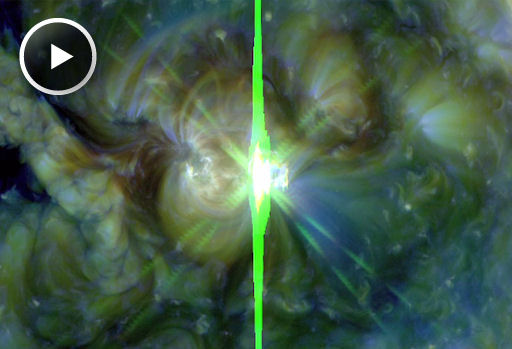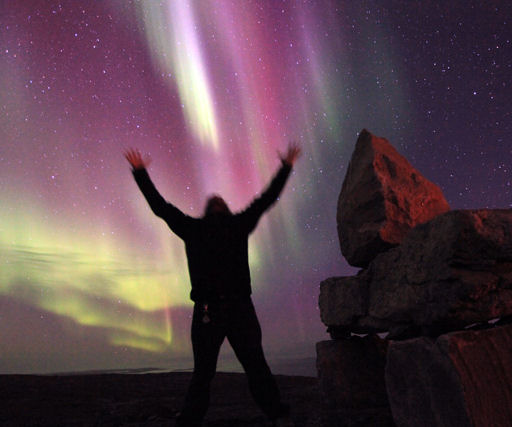Metallic photos of the sun by renowned photographer Greg Piepol bring together the best of art and science. Buy one or a whole set. They make a stellar gift. | | |
SOLAR RADIO BURSTS: This week's sharp increase in solar activity has turned the sun into a radio transmitter. Bursts of shortwave static are coming from the unstable magnetic canopy of sunspot 1283. Yesterday in New Mexico, amateur radio astronomer Thomas Ashcraft recorded some samples at 21 MHz: listen. Radio listeners should remain alert for this kind of solar activity as sunspot 1283 continues to seethe.
STRONG SOLAR ACTIVITY: Sunspot 1283 is crackling with solar flares. Yesterday, Sept. 6th, the active region produced an M5.3-class eruption at 0150 UT followed by a X2.1-class event at 2220 UT. NASA's Solar Dynamics Observatory recorded this extreme UV flash from the X-flare:

The flares produced waves of ionization in Earth's upper atmosphere, briefly altering the propagation of low-frequency radio signals around our planet. Moreover, the two eruptions hurled clouds of plasma (CMEs) in our direction. CME impacts, geomagnetic storms and auroras are expected on Sept. 8-10. Stay tuned for updates. Solar flare alerts: text, voice.
X-flares of Solar Cycle 24: There have been only a small number of X-flares since the beginning of new Solar Cycle 24. Here is a complete list so far: Feb. 15, 2011 (X2), March 9, 2011 (X1), Aug. 9, 2011 (X7), Sept. 6, 2011 (X2). Before these four, the previous X-flare occured on Dec.14, 2006, (X1) during old Solar Cycle 23.
AURORA SEASON: September is only one week old and it has already been a good month for Northern Lights. With the midnight sun doing a late-summer fade, many Arctic sky watchers are seeing auroras for the first time in months. Sylvain Serre of Ivujivik, Canada, photographed this satisfied observer on Sept. 3rd:

"For the first time this season, we had clear dark skies in the village of Ivujivik in northern Quebec," says Serre. "The Northern Lights were very bright, dense and colorful."
As shown in the gallery, similar displays have been observed almost every night this month. More auroras are possible on September 8-10th in response to the expected arrival of one or two CMEs propelled in our direction by sunspot 1283. Stay tuned. Aurora alerts: text, voice.
September 2011 Aurora Gallery
[previous Septembers: 2010, 2009, 2008, 2007, 2006, 2005, 2004]

